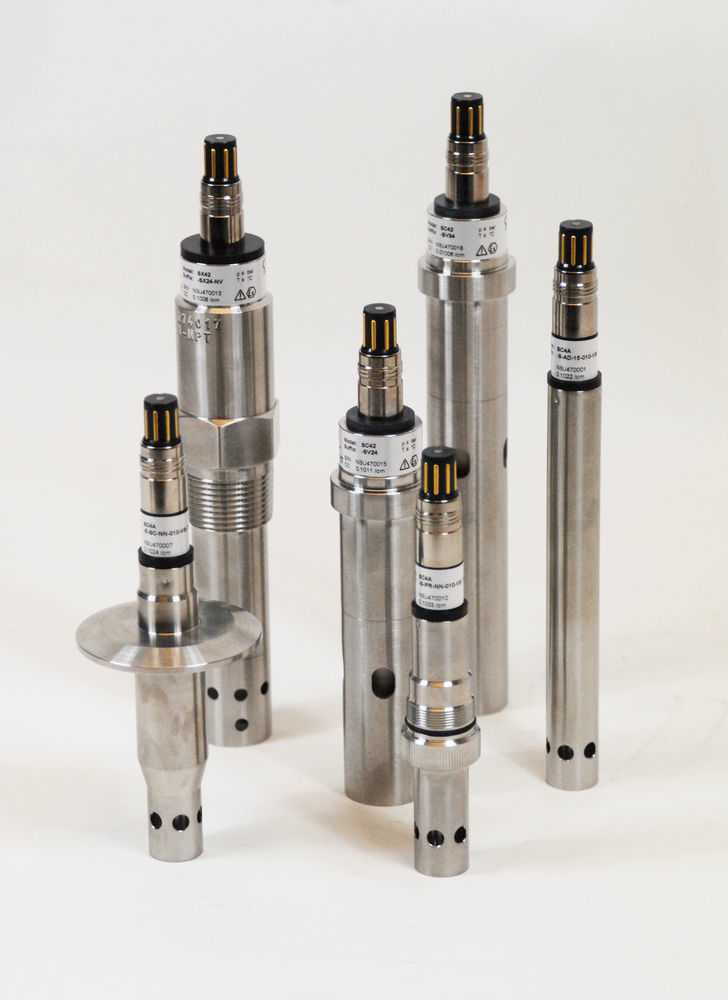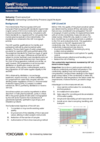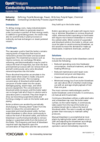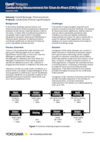In pure water applications, the accuracy of measurements is strongly influenced by temperature variations, polarization effects at the surface of the electrodes, and cable capacitances.
Yokogawa’s SC42 and SC4A contacting conductivity sensors are available from a combination of FDA-approved wetted materials, making them ideal for the monitoring of pure water systems used in the preparation of injectable solutions.
The SC42 and SC4A are also ideal for use in many low conductivity applications including:
- Semiconductor
- Power
- Pharmaceutical
Details
 |
 |
 |
|
| Base Model Code | SC4A | SC42 Large Bore | SC42 Small Bore |
|---|---|---|---|
| Cell Constants | 0.02/cm; 0.1/cm | 0.01/cm; 0.1/cm | 0.02/cm; 0.1/cm; 1.0/cm |
| Ranges | 0.04-400 µS/cm; 0.2-2,000 µS/cm | 0.02-2,000 µS/cm; 0.2-20,000 µS/cm | 0.04-400 µS/cm; 0.4-2,000 µS/cm; 4.0-5,000 µ/cm |
| Temperature Element | Pt1000 | Pt1000 | Pt1000 |
| Pressure Rating | 10 bar/142 PSIG | 10 bar/142 PSIG | 7 bar/100 PSIG |
| Maximum Temperature | 110°C/230°F | 150°C/302°F | 100°C/212°F |
| Installation Connections | 3/4" NPT Fitting; 1", 1.5" or 2" Tri-Clamp' Retractable | Requires FD40, FS40 or FF40 Holder | 3/4" NPT Fitting; 1", 1.5" or 2" Tri-Clamp |
| Integral Cable | YES | NO | YES |
| Materials Of Construction | 316 Stainless Steel or Titanium, FDA-compliant wetted materials | 316 Stainless Steel | 316 Stainless Steel or Titanium |
| Design Style | 2-Electrode | 2-Electrode | 2-Electrode |
Resources
Yokogawa’s conductivity transmitters and converters possess USP functions that make this seemingly complex and troublesome requirement pain-free and automatic.
To defray energy costs, many industrial plants have their own boilers to generate steam to produce a portion of their energy needs. In addition to generating power, the steam may also be used directly in plant processes or indirectly via heat exchangers or steam jacketed vessels.
There are many points in the processing of edible fats and oils that benefit from the use of analytical measurements. Inductive conductivity, contacting conductivity, gas density, and pH can be utilized to increase the quality of the end product, as well as protecting expensive processes.
Clean-in-place (CIP) is the system designed for automatic cleaning and disinfecting in the food & beverage, pharmaceutical, and chemical industries. Tanks and piping are cleaned and sterilized with various cleaning solutions, fresh or hot water, or steam after manufacturing products is completed.
Ion Exchange is a method for the exchange of ions between two electrolytes or between an electrolyte solution and a complex molecule. In most cases the term is used to denote the processes of purification, separation, and decontamination of aqueous and other ion-containing solutions with solid polymeric or mineralic ion exchangers.
Downloads
Brochures
Instruction Manuals
General Specifications
- Model WU40 Sensor Cables (592 KB)
- Model SC4A Conductivity Sensors and Fittings for 2-electrode Systems (1.3 MB)
- Model SC42 Conductivity Sensors for 2-Electrode Systems (529 KB)
- Model SC42 2/4-electrode design for Contacting Conductivity (3.1 MB)
- FF40/FS40/FD40 2/4-electrode design for Conductivity Flow fittings, Subassemblies and Immersion fittings (1.4 MB)
Technical Information
Certificates
- IECEx_DEK_14_0032X_Issue 0 SC4A, SC42 and SX42
- EU_UK Declaration of conformity SC4A 2022-10-03 (166 KB)
- DEKRA 14ATEX0074X-Issue 1 SC4A, SC42 and SX42
- IECEx_DEK_14_0032X_Issue 0 SC4A, SC42 and SX42
- KCs_SC42(21-KA4BO-0419X) (156 KB)
- KCs_SC42(21-KA4BO-0420X) (157 KB)
- TS_SC4A SC42,SX42 (1.7 MB)
- EACEx_SC4A SC42,SX42 (3.7 MB)
- PESO_SC4A SC42,SX42 (98 KB)
- Ex NEPSI_SC4A SC42,SX42 (917 KB)
- EU_UK Declaration of conformity SC49 2022-10-03 (114 KB)
- EU_UK Declaration of conformity SC42 2022-10-03 (158 KB)
- EAC certificate for sensors (1.8 MB)
Engineering Tools
MSDS/SDS
Looking for more information on our people, technology and solutions?
Contact Us










